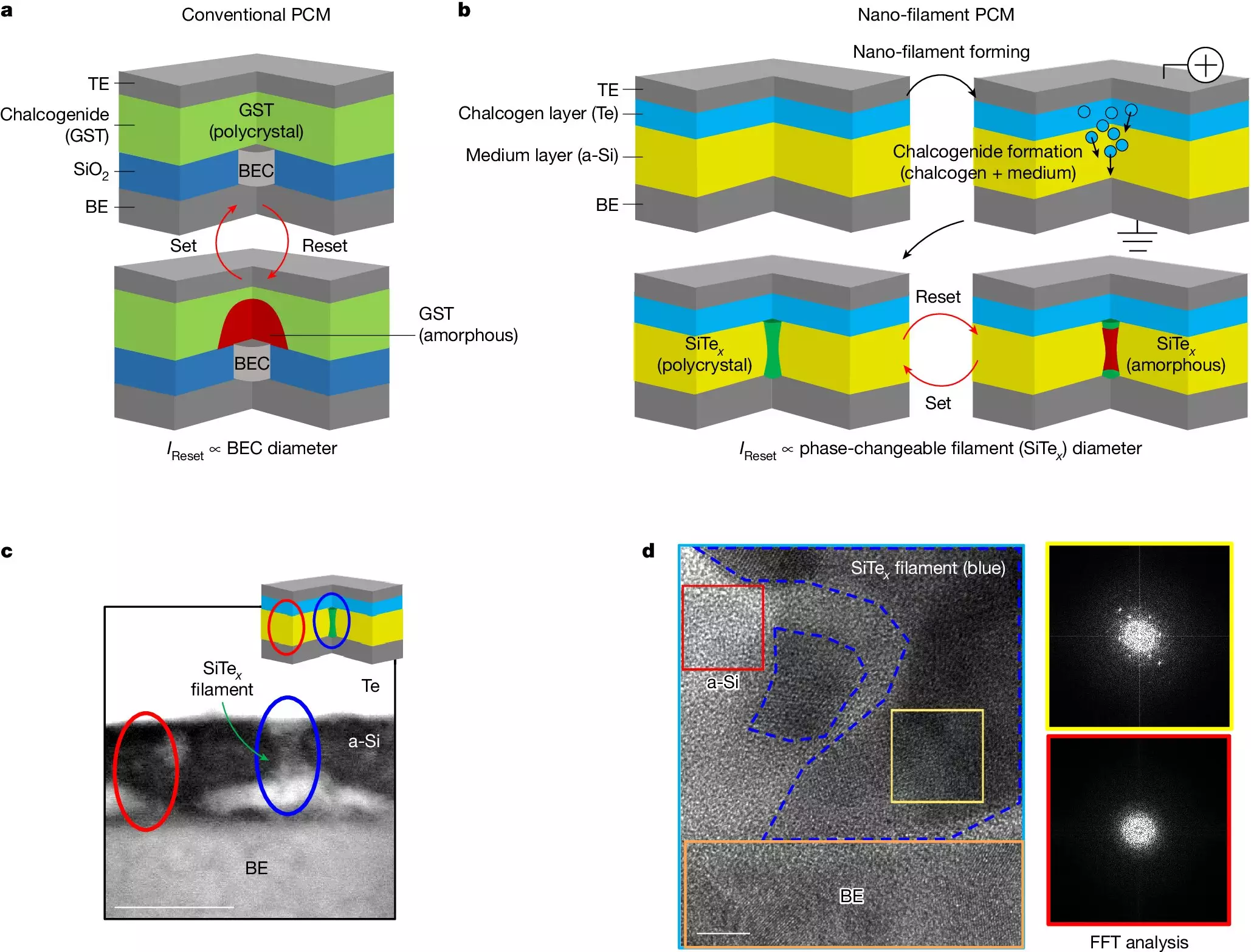A recent breakthrough in memory device technology has been achieved by a team of Korean researchers led by Professor Shinhyun Choi from the KAIST School of Electrical Engineering. The team has successfully developed a new memory device that has the potential to replace existing memory technologies due to its low processing costs and ultra-low-power consumption. This next-generation phase change memory device, as featured in the journal Nature, aims to address the drawbacks of current memory technologies such as DRAM and NAND flash memory.
The existing phase change memory devices are known to have costly fabrication processes and require significant power consumption for operation, making them less efficient for large-scale memory products or neuromorphic computing systems. In comparison, DRAM offers high speed but is volatile, losing data when the power is turned off, while NAND flash memory is non-volatile but relatively slow in read/write speeds. Phase change memory combines the best of both worlds, providing high speed and non-volatile characteristics, making it a promising candidate for next-generation memory technology.
In order to address the power consumption challenges of phase change memory, Professor Choi’s research team focused on developing a method to electrically form phase change materials in an extremely small area. By doing so, they were able to create an ultra-low-power phase change memory device that consumes 15 times less power than conventional devices. This breakthrough not only significantly reduces the power consumption but also lowers the overall manufacturing cost, making it a viable option for practical large-capacity memory products and neuromorphic computing systems.
Professor Choi expressed confidence in the future prospects of this research, stating that the developed phase change memory device offers a novel approach to overcoming the challenges faced in producing memory devices with improved manufacturing costs and energy efficiency. The potential of this new memory technology is vast, with implications for advancing artificial intelligence hardware and revolutionizing the field of neuromorphic computing by mimicking the human brain’s capabilities.
The development of an ultra-low-power phase change memory device by Professor Shinhyun Choi’s research team marks a significant milestone in the field of memory device technology. This breakthrough not only addresses the power consumption issues of existing memory technologies but also opens up new possibilities for enhancing the efficiency and performance of future memory products. As research in this area continues to progress, we can expect to see further innovations that will shape the landscape of artificial intelligence and computing technologies.


Leave a Reply